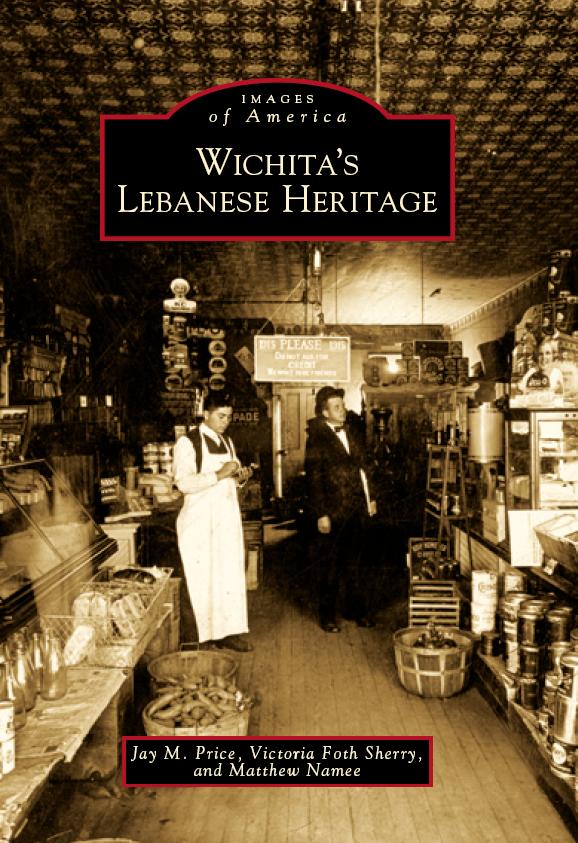Recently, I coauthored Wichita’s Lebanese Heritage, a new book from Arcadia Publishing. Smack-dab in the middle of the Great Plains, Wichita, Kansas is an unlikely center for Orthodoxy. But it’s a pretty remarkable place, with a resident Antiochian bishop, the greatest Orthodox-owned bookstore in America, and thousands of Orthodox Christians.
Wichita is unusual in several respects. Its Orthodox history has been dominated by Antiochians. The first two Orthodox churches in the city were Antiochian. A Greek parish was established in the middle of the last century, but it hasn’t had a resident priest in years, and many of its members are active in the Antiochian parishes. While Wichita is hardly a small town — the metropolitan area has over half a million people — all of the Orthodox priests in the city are Antiochian. Every single one of them. And as the seat of an Antiochian bishop, you could make the argument that, in some ways, Wichita Orthodoxy is more distinctively Antiochian than any other place in America.
The two churches, St. George and St. Mary, began as one community. While the communities now use the term “Lebanese” to describe their founders, the founders referred to themselves as Syrians when they began to arrive in Kansas in the 1890s. They came for economic reasons, mainly, beginning as peddlers and then becoming established entrepreneurs. The first documented Orthodox church service in Wichita took place in 1904, when Fr. George Maloof of Boston passed through town and baptized some Syrian children. Fr. Nicola Yanney of Kearney, Nebraska made pastoral visits in the years that followed. In other places, those beginnings would soon lead to the formation of an Orthodox parish in the city, but not in Wichita — it wasn’t until 1918 that the local Orthodox people organized their own church.
The first church was St. George, which is now a cathedral. Its original members were predominantly from two clans, corresponding to two villages in modern Lebanon, Jedeidat Marjayoun and Mhaithe. The two clans lived in the same neighborhood, went to the same church, and did business with each other. But, as happened in so many other Orthodox communities in that era, the original parish eventually split. In 1932, one of the clans (my own family’s, incidentally) decided to start their own parish, St. Mary.
Growing up in Wichita, I’ve heard half a dozen theories about the split, some of them quite colorful. One story goes that N.F. Farha, the patriarch of the Jedeidat Marjayoun clan, didn’t want to let his Mhaithe counterpart, E.G. Stevens, have a key to the church building. I’d love to repeat some of the more dramatic theories, but I’m afraid that wouldn’t be tactful. Along less exciting lines, my late grandfather, Sam Namee, wrote, “Following a dispute relative to the building of a larger church, [the Mhaithe clan] decided to go on their own.” Most likely, a combination of incidents led to the creation of a second parish.
In 1935, the “New York-Toledo” schism began among Antiochians in America. St. George took the side of Metropolitan Antony Bashir of New York, while St. Mary favored Metropolitan Samuel David of Toledo. In the decades that followed, there weren’t actual hostilities among Wichita’s Antiochians, so much as the two groups had little interaction with each other. They were neighbors, but they might as well have been on different continents. The New York-Toledo schism was healed in 1975, though, and today, the two parishes get along just fine.
Of course, our book isn’t just about the Orthodox of Wichita, but the vast majority of Wichita’s Lebanese are Orthodox, so the histories are inextricably intertwined. I thoroughly enjoyed working on the book, and I’m very pleased with how it turned out.
My coauthors were Dr. Jay Price and Victoria Sherry. Jay was the head of the project, and is a history professor at Wichita State University, where heads the Public History program. He’s written several books in Arcadia’s “Images of America” series, and in the process of working on this book, he became an expert on Wichita’s Lebanese history.
Victoria is a convert to Orthodoxy, and formerly ran the Heartland Orthodox Christian Museum. With the museum, she had organized an exhibit on Arab Orthodox in the Heartland, and her work on that exhibit provided a foundation for our work on the book. I’m hoping to interview Jay and Victoria on my Ancient Faith Radio program sometime in the not-too-distant future. (Incidentally, the Heartland Orthodox Christian Museum closed several years ago. It appears that someone unconnected with the original museum has revived the museum’s website, and made it appear as if the museum was still open and hosting exhibits and events. For anyone who might stumble upon this website, please note that there is no longer an Orthodox museum in Topeka, bizarre websites notwithstanding.)
We’ll certainly talk more about Wichita’s Orthodox history in the future. If you’re interested in ordering the book, I’d suggest that you do so through Eighth Day Books, a world famous Orthodox-owned bookstore in Wichita. Also, all of the authors’ royalties for the book are being donated to the two main Orthodox parishes in Wichita, St. George and St. Mary. To place an order from Eighth Day Books, click here.
